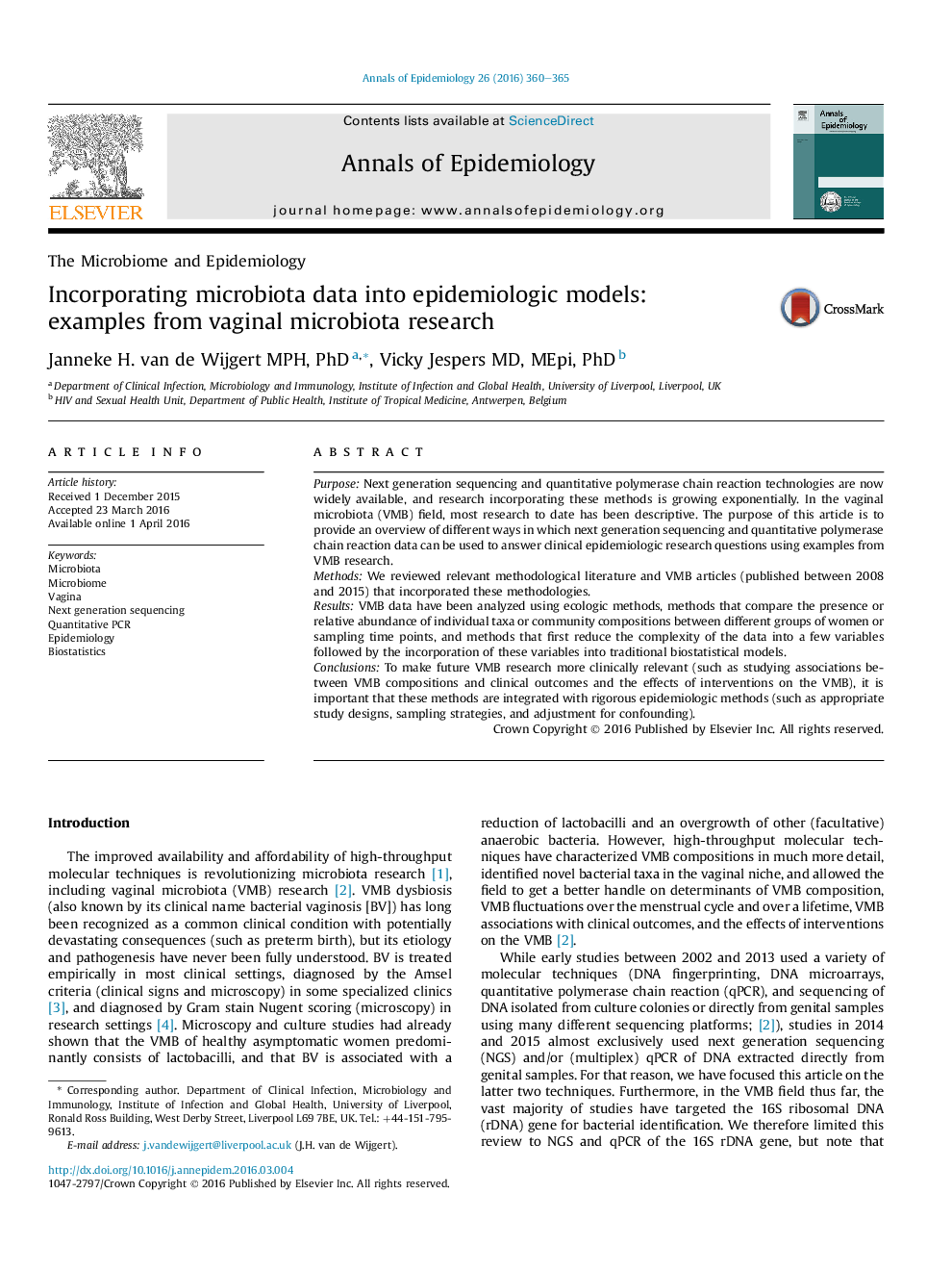| Article ID | Journal | Published Year | Pages | File Type |
|---|---|---|---|---|
| 3443639 | Annals of Epidemiology | 2016 | 6 Pages |
PurposeNext generation sequencing and quantitative polymerase chain reaction technologies are now widely available, and research incorporating these methods is growing exponentially. In the vaginal microbiota (VMB) field, most research to date has been descriptive. The purpose of this article is to provide an overview of different ways in which next generation sequencing and quantitative polymerase chain reaction data can be used to answer clinical epidemiologic research questions using examples from VMB research.MethodsWe reviewed relevant methodological literature and VMB articles (published between 2008 and 2015) that incorporated these methodologies.ResultsVMB data have been analyzed using ecologic methods, methods that compare the presence or relative abundance of individual taxa or community compositions between different groups of women or sampling time points, and methods that first reduce the complexity of the data into a few variables followed by the incorporation of these variables into traditional biostatistical models.ConclusionsTo make future VMB research more clinically relevant (such as studying associations between VMB compositions and clinical outcomes and the effects of interventions on the VMB), it is important that these methods are integrated with rigorous epidemiologic methods (such as appropriate study designs, sampling strategies, and adjustment for confounding).
